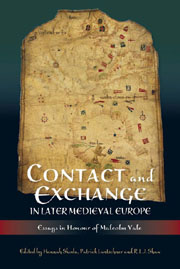Introduction
Published online by Cambridge University Press: 05 February 2013
Summary
Human beings, in the words of Adam Smith, have ‘the propensity to truck, barter, and exchange one thing for another’.
This innate human tendency – which is not restricted by national boundaries, nor expressed only in trade and economic exchange – is the subject of this collection of articles. By the time Smith was writing his Wealth of Nations (1776), apparently ever denser levels of connections on the European continent, as well as between Europe and the rest of the world, seemed a particularly stark manifestation of this fundamental principle of human interaction. Yet, relationships of contact and exchange had been built up over centuries. They not only crystallised around the continent's strong nation-states which played such a fundamental role in modern processes of exchange, but were also made possible by the multiple other institutions and networks that Europeans had been constructing across geographical, political, social, cultural or linguistic boundaries on their own continent. ‘Globalisation’ is often presented as a product of the modern age, but the theme of contact and exchange across existing boundaries is one that is scarcely confined to any epoch, or even any particular area of the world.
The later Middle Ages are a crucial juncture in this regard. A period often viewed as decisive for state growth and solidifying boundaries, this was also a period in which contact and exchange across such boundaries was intense, fruitful and decisive for historical processes.
- Type
- Chapter
- Information
- Contact and Exchange in Later Medieval EuropeEssays in Honour of Malcolm Vale, pp. 1 - 24Publisher: Boydell & BrewerPrint publication year: 2012



